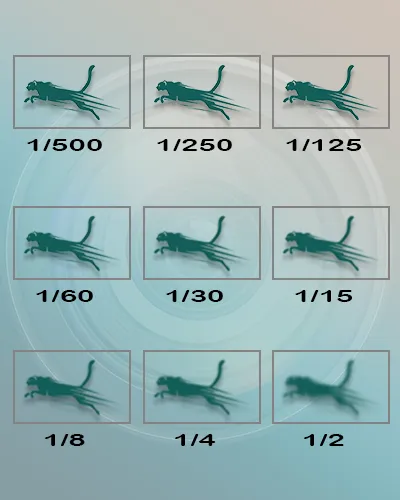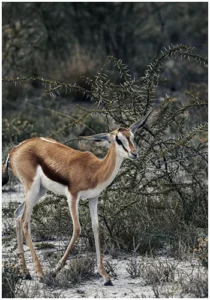
Photography as a Hobby for Beginners: Unlock Your Artistic Vision
Photography can be a fulfilling and enjoyable hobby that brings a creative outlet to your


What is shutter speed in photography? Shutter speed can be one of the most confusing aspects of photography for beginners. Shutter speed is a very important setting to understand if you want your photos to have proper impact and clarity. Slow shutter speeds can help blur moving objects in photos. Higher shutter speeds are good for photographing friends or family, the higher shutter speed helps prevent them from being blurry.
Knowing the right shutter speeds can also be challenging if you’re new to photography. That’s why we’ve written this comprehensive guide on everything you need to know about shutter speed for photographers starting out. So let’s begin!
Shutter speed is one of the key settings on your camera. It determines how long the shutter is open and exposes light onto the sensor. This is important, as it affects your exposure.
Again – Shutter speed affects the camera’s exposure. You want to ensure that your photo is correctly exposed. If you’re lacking light, you’ll need to use a slower shutter speed. If there’s too much light, you will need to set a faster shutter speed to avoid overexposing the image.
Shutter speed is used with aperture and ISO, to get a proper exposure for the scene. For example, if you want to create a blurry background effect in your photo, you can use a large aperture (small F-stop number) and set your shutter speed to be relatively slow. This will allow more light into the camera lens while keeping the shutter open for longer, blurring anything behind your subject. Alternatively, if you want to freeze action in a photo, you can use a fast shutter speed and set your aperture and ISO to be relatively low. This will minimize the amount of light that enters the camera, ensuring that your subject is sharp and in focus while everything else is blurry.
There are a few factors to consider with shutter speed. The best shutter speed for your photo depends on the light and motion of the scene you are trying to photograph. For example, if you’re photographing trees in the wind, you’ll want to use a fast shutter speed to freeze the motion.
If you wish to portray a blur of cars through city streets, you’ll need to use a slow shutter speed of about one second. Keep in mind that when using a slow shutter speed, it’s important to use a tripod or some other type of stabilizer to keep your camera from shaking
So what exactly is a slow shutter speed? As the name suggests, it refers to any shutter speed slower than 1/60th of a second. When your camera’s shutter is open for this amount of time or longer, it captures more light and gives you the ability to create some amazing photographic effects!
Why 1/60th? Under normal conditions, this is considered the lowest shutter speed for hand holding a camera without inducing camera shake. Note, before image stabilization was introduced.
When you think of shutter speed, you may think of the fast-paced world of photography. After all, the faster the shutter speed, the less time your camera’s sensor is exposed to light. This means that images taken with a high shutter speed are usually sharper and have less motion blur.
However, sometimes you will want to use a slower shutter speed. Especially when photographing objects in motion or trying to capture a sense of motion in your photos. In these cases, using a slower shutter speed can help you create some amazing effects!
Slower shutter speeds let more light enter the camera, making them ideal for nighttime or low-light situations. To eliminate camera shake or a fuzzy image at these slower speeds, you’ll need a tripod.
An example of where you would want to use a slower shutter speed would be stars, milky way or even waterfalls, where you want that silky smooth look
When photographers use a slow shutter speed, we are looking for the desired effect. Motion blur, light trails, waterfalls. This can be a cool technique, but it can also be difficult to achieve. To avoid blurring the photo, use a good tripod. Even the slightest shake of the camera will cause an image to be blurry.
Another consideration is a slower shutter speed requires more light. If there isn’t enough light available, you won’t be able to take a photo with a faster shutter without using artificial lighting or increasing the ISO on your camera, which could cause increased noise levels in your photos.
When most people think of shutter speed, they think of a fast shutter speed. And for good reason! A fast shutter speed is typically understood as a shutter speed above 1/60th of a second. 1/60 is the old standard for when hand-holding a camera can be done without camera shake. Which is essential for photographing moving objects or capturing action shots.
But fast shutter speeds can vary depending on the type of photography, sport vs portraits. For example, if you’re taking photos of a person running, you’ll need to use a much faster shutter speed than if you’re taking photos of someone sitting in a chair. When someone is running, their body is in motion and presents more of a challenge.
Fast shutter speeds are also used by photographers capturing single moments. When you see an amazing photo of a lion running after its prey, and wonder how the photographer caught it at just the right moment. Chances are they were using a very fast shutter speed!
When shooting in a bright-light situation, or when you need to capture fast action, using a faster shutter speed can be beneficial. With faster shutter speeds, your camera freezes motion. Instead of capturing a blur where the subject was, you’ll get a nice crisp image with all the details in perfect focus.
Another great thing about using a fast shutter speed it makes your camera less sensitive to camera shake. Remember the 1/60th rule. Even if you’re not very steady on your feet, by using a fast shutter speed you can still get sharp photos without blurriness.
An example of where you would want to use a faster shutter speed is wildlife photography. Where you want to freeze the movement of the animal.
There are a few things to remember when choosing a shutter speed. The right shutter speed can help prevent unintended blur, while intentional blur can add a sense of motion. When photographing objects that are moving quickly, choose a speed that will create the desired effect without creating unwanted blurring.
Be aware of the camera’s limitations. Shooting with a digital camera, you might not want to shoot at a very high ISO. A high ISO may increase the noise in the photo. Similarly, when using a film camera, trying to capture fast-moving objects, you’ll need to use a higher shutter speed than photographing stationary objects.
Finally, experiment with different shutter speeds and see what works best for your photos!
Pro-Tip
Using the incorrect setting for the type of shot is one of the biggest blunders photographers make. Another common mistake is not checking your settings before pressing the shutter button.>/p?
If you’re photographing a person jogging and want to show movement, you’ll need a fast shutter speed. If you’re taking a sunset or sunrise photo, you’ll need a slower shutter speed so that you can capture more light.
It's important to know your camera well and be comfortable changing settings quickly.
Pro-Tip
Things to consider when choosing shutter speed. One is the light of the scene; you will need a different shutter speed depending on how bright or dark the environment is. Another consideration is motion blur. If you want to capture a moving object and keep it sharp, you’ll need to use a fast shutter speed. Conversely, if you want to create an artistic blur effect, you’ll need to use a slow shutter speed. Finally, consider your composition and what you want included in the photo. If there’s too much motion happening in the scene, using a slower shutter speed may not be ideal; conversely, if everything is static, using a fast shutter speed may not be necessary.
Having trouble deciding on the best shutter speed? We understand your frustration.
While choosing the correct shutter speed may appear difficult at first, it is actually rather simple once you get the hang of it.
The first step, determine the lowest possible shutter speed for the scene. Look at what is moving in the scene and figuring out how fast it’s moving. If you’re photographing race cars, you’ll want to use a shutter speed of 1/1000s or faster to freeze their motion. If you’re photographing a waterfall, a good starting point would be 1/4s or slower.
Now that you’ve identified the optimal shutter speed, it’s time to boost your shutter speed (or adjust other variables) for a proper exposure.
If your scene is too bright or too dark, adjust one or more of these settings to get it in line with the correct Exposure Value (EV). A good starting point is to increase your shutter speed by two steps if your scene is too bright or decrease it by two steps if your scene is too dark.
We hope this guide has given you a better understanding of shutter speed, how it works and how you can use it to improve your photography. Remember to experiment with different shutter speeds to see what works best for you and the type of photography you enjoy.

Photography can be a fulfilling and enjoyable hobby that brings a creative outlet to your

Welcome to our guide to Photoshop tutorials for beginners: A Complete Beginner’s Tutorial for Learning

Creating stunning images is all about nailing the perfect colour grade. It’s what makes your